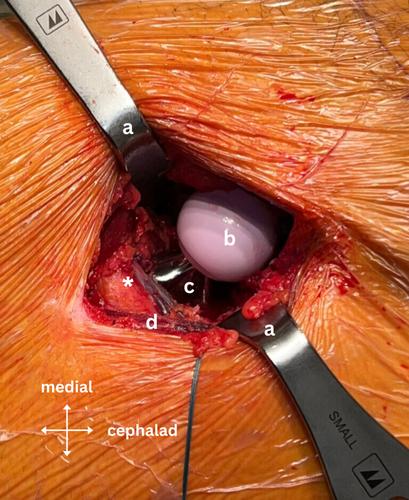High preservation rates of the ascending branch of the lateral femoral circumflex artery during total hip arthroplasty through the direct anterior approach
Abstract
Purpose
(i) To investigate the rate of preservation of the ascending branch of the lateral femoral circumflex artery (a-LFCA) during total hip arthroplasty (THA) through a direct anterior approach (DAA), and (ii) to study factors that contribute to its successful preservation.
Methods
All patients who underwent primary THA between 1 September 2023 and 29 February 2024 were reviewed. One-hundred seventy-two patients were included in the study, 91 females and 81 males, aged 63.2 ± 12.6, with a body mass index of 26.1 ± 4.6 kg/m2. THA was performed through a minimally invasive DAA in all patients, using either a standard vertical DAA or a Bikini incision. Patients were stratified by the preservation of the a-LFCA (preserved, ligated/electrocauterized due to obstruction of the surgical field during dissection, electrocauterized due to bleeding during femoral broaching or stem insertion). Descriptive statistics were used to summarise the data. Logistic regression analyses were performed to explore possible factors associated with the preservation of a-LFCA.
Results
The a-LFCA was preserved in 130 patients (75.6%), had to be ligated/electrocauterized due to obstruction of the surgical field during dissection in 31 patients (18.0%), and had to be electrocauterized due to bleeding during femoral broaching or stem insertion in 11 patients (6.4%). Multivariable logistic regression analyses revealed that preservation of a-LFCA was significantly more likely in female patients (odds ratio [OR] = 2.22; 95% confidence interval [CI] = 1.1–4.6; p = 0.029), as well as in patients with younger age (OR = 0.97; 95% CI = 0.9–1.0; p = 0.036) and lower weight (OR = 0.97; 95% CI = 0.9–1.0; p = 0.005).
Conclusions
Preservation of the a-LFCA is possible in the majority of patients (75.6%) undergoing THA through minimally invasive DAA. Furthermore, preservation of the a-LFCA is more likely in female patients, younger patients and patients with lower weight.
Level of Evidence
Level IV.


 求助内容:
求助内容: 应助结果提醒方式:
应助结果提醒方式:


